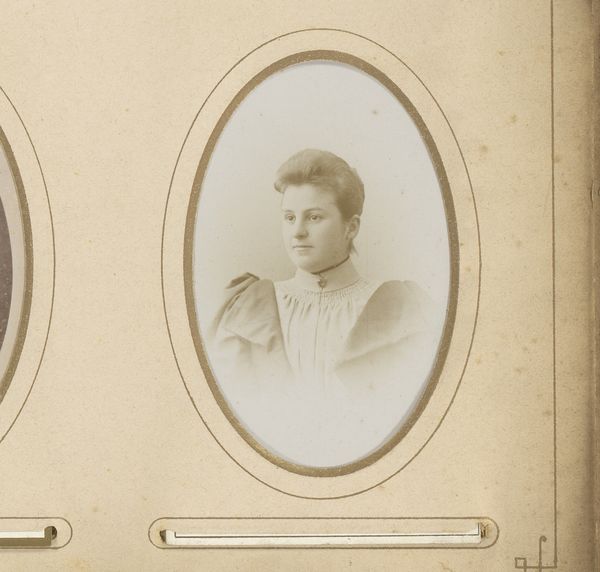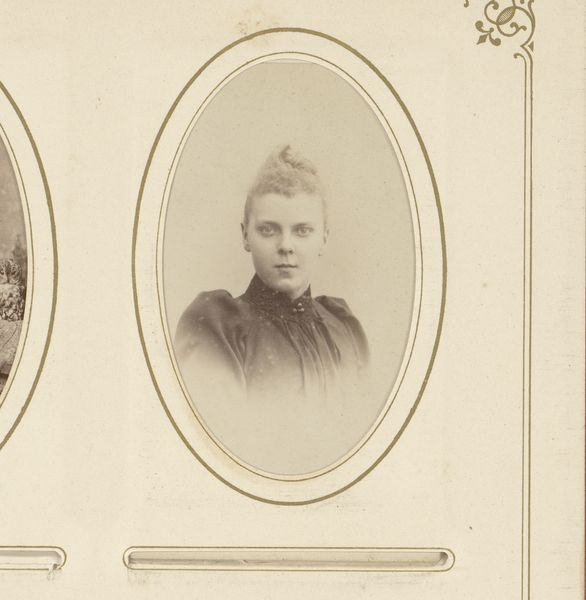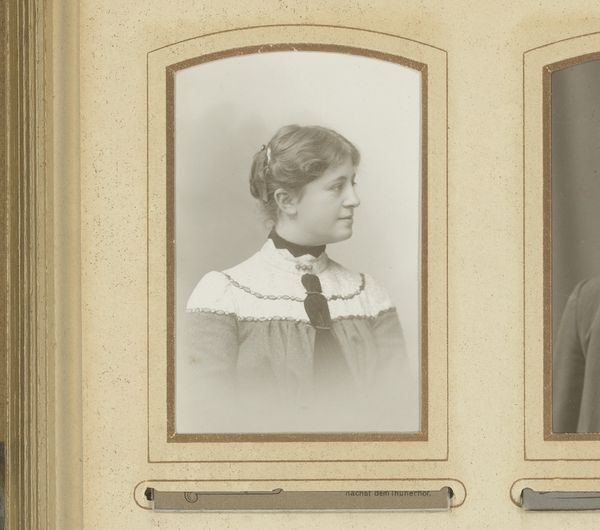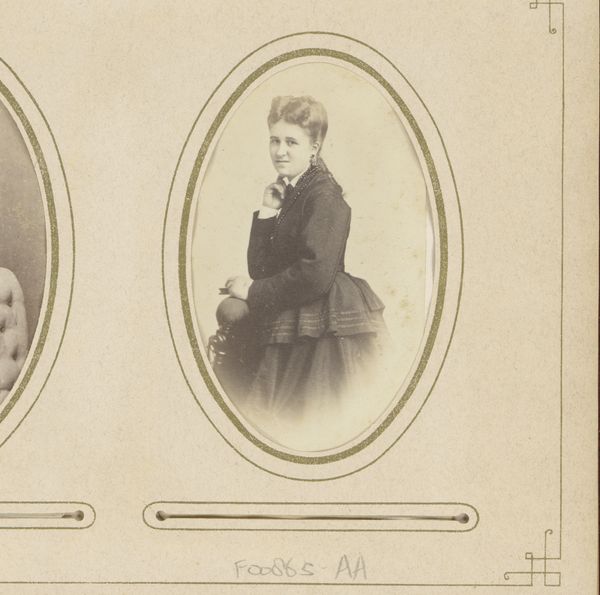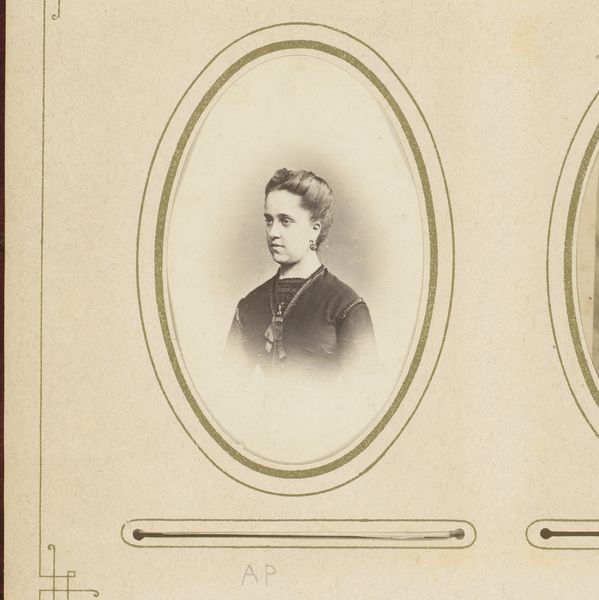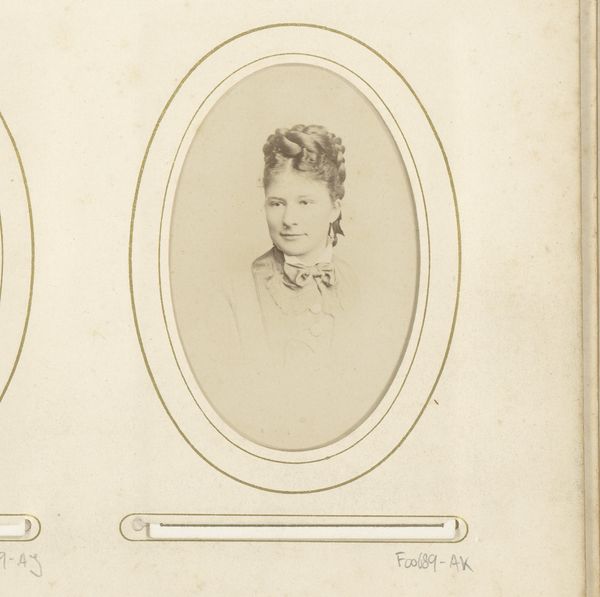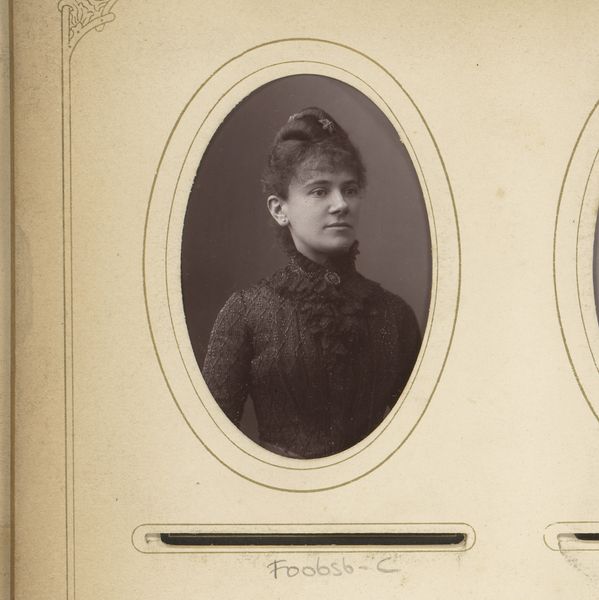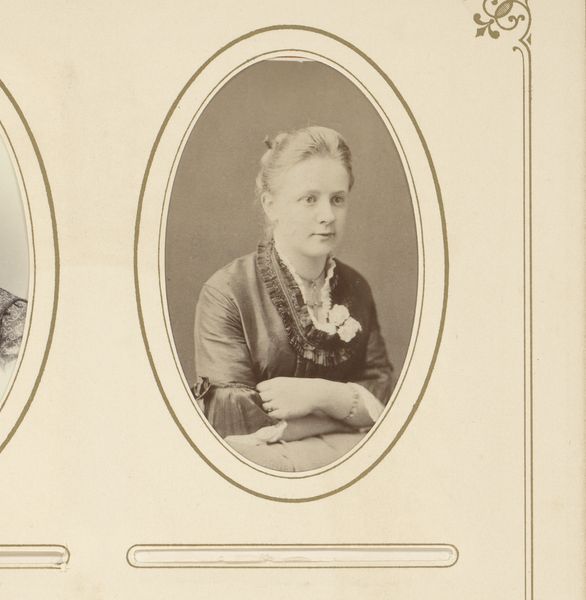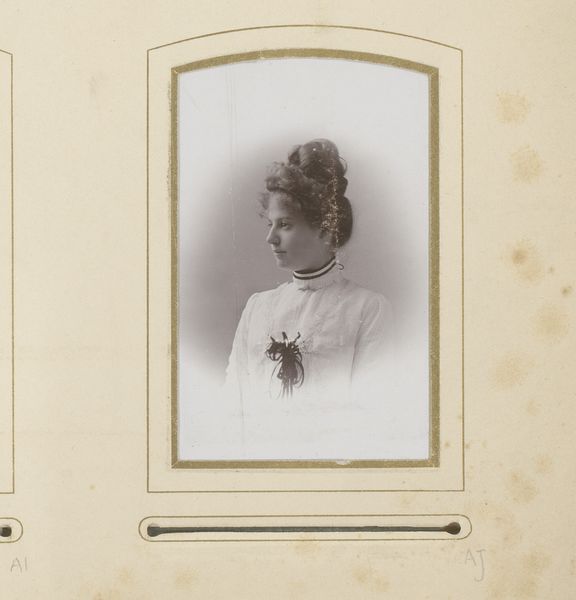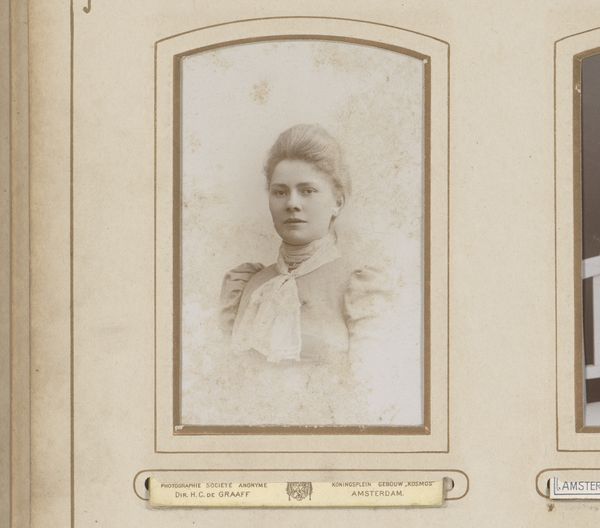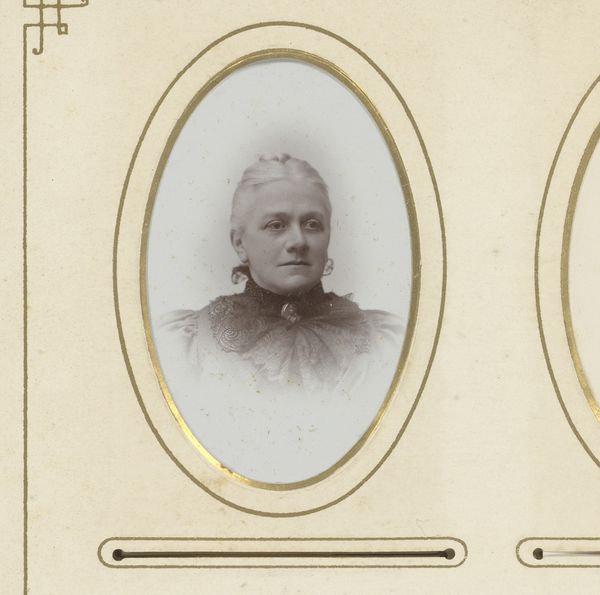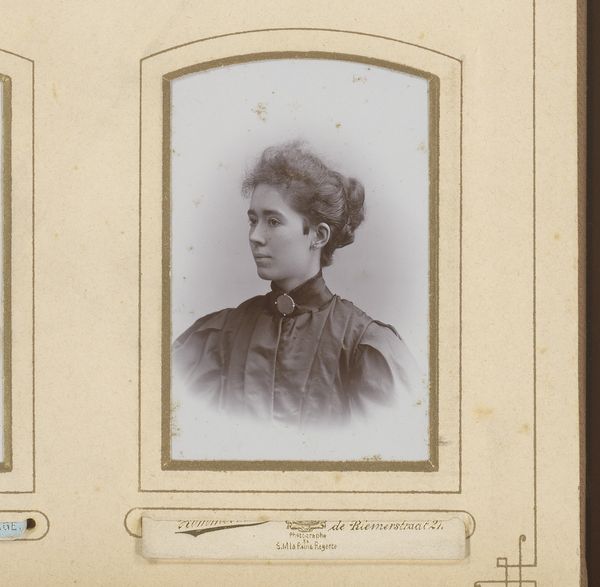
Dimensions: height 86 mm, width 53 mm
Copyright: Rijks Museum: Open Domain
Editor: Here we have Wilhelm Ballizany's "Portret van een jonge vrouw" from around 1900. It's a photograph that has this sepia-toned, vintage feel. The young woman has such a composed, almost regal profile. What’s your interpretation of this work within its historical context? Curator: This piece offers a glimpse into the democratization of portraiture in the late 19th and early 20th centuries. Photography became more accessible, shifting portraiture away from the exclusive domain of the wealthy painted elite. Note the studio setting – the decorative album page. These trappings provided a sense of occasion for the sitter, suggesting an elevated social status, regardless of her actual background. What does that say about the cultural values embedded within the very act of taking and displaying such portraits? Editor: So, it's less about artistic innovation, and more about the shifting social dynamics reflected in photographic portraits? Curator: Exactly. Consider also, who has access to make these portraits and whose stories get told. The proliferation of these images simultaneously created a wider visual record but also perhaps homogenized identity. Editor: That’s fascinating. It really opens up the questions of representation and access. Curator: Indeed. This image acts as a cultural artifact reflecting and shaping societal perceptions, raising enduring questions about visual culture and its role in solidifying power dynamics. Food for thought, wouldn’t you say? Editor: Definitely. I hadn't considered how photography itself could be a commentary on social standing and the evolving dynamics of portraiture. Thanks so much.
Comments
No comments
Be the first to comment and join the conversation on the ultimate creative platform.
